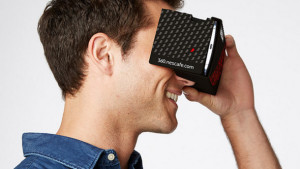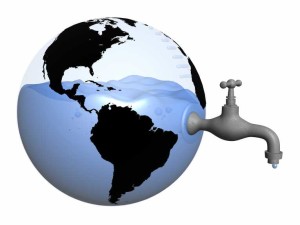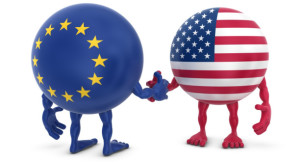Looking ahead to 2016, Mintel’s Senior Trends Consultant Richard Cope discusses the five key UK consumer trends set to impact the market, including implications for both consumers and brands in the year ahead.
My Mind’s Eye
 Virtual and augmented reality technologies enter our homes and businesses to entertain, trial and train.
Virtual and augmented reality technologies enter our homes and businesses to entertain, trial and train.
“A host of virtual reality (VR) and augmented reality (AR) headset launches will see consumers enter immersive gamescapes and layer entertainment or educational content over their normal field of vision. Facebook’s Oculus Rift is expected to go on sale early 2016, but beyond immersive in-home gaming the possibilities of virtually exploring locations present a host of opportunities to ‘test drive’ products or locations. In the augmented reality sphere, products such as Microsoft Hololens will integrate holographic images into the real world. This approach is already being embraced by retailers as a means of showing customers just how their wares would look in their homes.”
“Mintel research highlights strong potential, with as many as half (50%) of UK consumers already aware of virtual reality headsets and 31% expressing an interest in using them – a figure which rises to 53% of 16-24 year olds. Demand goes beyond usage to ownership, as today, some 11% of UK consumers say they are interested in buying a head mounted display.”
“Our excitement would be tempered if these innovations were confined to in-home gaming – and to those players with the funds to afford them. But they also present businesses with an opportunity to provide in-store experiences and reassurance, areas which consumers continue to value. In the automotive sector, Lexus and Volvo have shown sufficient faith in the technology to provide virtual test drives of their vehicles. In the holiday sector, Thomas Cook, Marriott and Qantas variously use the technology to demonstrate, reassure and entertain.”
“As headsets become more prevalent, customers’ expectations about how they can be used in stores to demo products across all sectors will grow. John Lewis and Marks & Spencer have begun using AR and VR respectively to help customers envision their products in their homes. But it’s in health treatments where we’ve seen the most imaginative and inspirational use of VR, with the Institute of Creative Technologies (ICT) using VR game scenarios to help US Iraq war veterans recover and Virtually Better using similar techniques to confront consumer phobias.”
“Growing interest will inspire more businesses to embrace this technology as a means of creating immersive advertising, as Boursin has done with its Sensorium ‘refrigerator rollercoaster’ or proving sustainability credentials, such as the Nescafé 360° app that takes you to its farmland. While cost will preclude VR and AR from entering everyone’s homes, it will be increasingly embraced by businesses seeking to variously entertain and reassure consumers, in a bid to win their attention and their custom.”
On the Waterfront
 Shortages will make water an increasingly precious and politically charged commodity, encouraging innovation in sourcing, recycling and manufacturing.
Shortages will make water an increasingly precious and politically charged commodity, encouraging innovation in sourcing, recycling and manufacturing.
“In 2016 we will feel the agricultural fallout from an extreme period of global drought, encompassing areas as diverse as California, Alberta, Brazil and Thailand. European suffering might not amount to much more than a shortage of certain foodstuffs from drought hit areas elsewhere, but innovations and corporate social responsibility practices in water sourcing, recycling and conservation are going to come to the fore in the European market.”
“Consumers are alive to the need of water conservation and will warm to brands that can help achieve this at a personal and public level. In the household sector, Mintel research finds 33% of UK consumers say they’d pay more for fittings that save on water or energy bills, whilst 48% worry about the impact of using too many chemical-based cleaning products on the environment. Meanwhile, some 28% are already concerned about the environmental impact of drinking bottled water.”
“The obvious impact of water shortage on agriculture is lowered production, job losses and shortages – and higher prices – in wine, beef and rice. As a result, we’ll certainly see more concentrates in coffee, other beverages, seasonings and water-sourcing product alternatives.”
“Some companies will work to make water recycling, restoration and research part of their corporate social responsibility programme. Household brands can embrace technological innovation to work with their customers. It may be that water efficiency gets flagged up on consumer packaged goods in the same way that it is for white goods. We might even see a bottled water tax at some outlets, taking inspiration from the carbonated drinks levy imposed by Jamie Oliver at his restaurants. In cuisine, we’re presented with a classic ‘Accentuate the Negative’ scenario where shortages justify more adventurous and affordable forays into alternatives like cactus, insects and saltwater brews. While in the beauty sector we’ll see more interest – and innovation – in face, body and teeth cleansing wipes and dry body washes and shampoos, as well as greater use of freeze-dried botanical powders, plant waters and botanical oils as water alternatives.”
Space-Time Continuum
 Space and time are at a premium, becoming new currencies in their own right and creating new marketplaces.
Space and time are at a premium, becoming new currencies in their own right and creating new marketplaces.
“More people are renting or sharing homes, creating a space-pressed culture of transience and ‘non ownership’. In the UK, almost half (47%) of UK consumers currently rent the property they live in as their main home, rising to 63% of 25-34s. This is part of a wider downward trend in owner occupancy across Europe. With 37% of UK 16-34s living at home with parents, guardians or other relatives, it’s no wonder that it’s this group who are creating the sharing economy solutions that seek to maximise the usage and availability of space for storage, parking, working and sleeping.”
“In an urbanising world of high-density living, access – rather than outright ownership – makes sense. As part of a wider trend towards sustainable, affordable sharing, some 57% of UK consumers say they always or sometimes borrow things instead of buy them and 34% attend ‘big swap’ or ‘swishing’ events to swap items they no longer need with others. These same factors are playing out in leisure, where 24% of US Millennials have stayed in a home share, home rental or home swap instead of a hotel.”
“The spread of Uber is sparking protest and competition, whether or not legislators clip its wings the model is here to stay. Expect more space initiatives like France’s Parkego and Spain’s LetMeSpace start-ups – which help people to make a profit from their unused parking spaces. Additionally the UK’s Vrumi, which lets people rent out unused rooms in their houses as daytime offices. Meanwhile, as time becomes a currency, we’ll see more people subscribing to unlimited flights, concerts or salon visits for a monthly or annual fee and more demand for the kind of same day or within-the-hour delivery proffered by Liefery in Germany and Zuper in Austria. Extending rental agreements to everything from clothes to DIY tools will appeal to space-conscious consumers, whilst ‘monodose’ products will be positioned as single serve options with retailers making a virtue of small batch production as a way to save space, energy and materials.”
“A general point of good news for the entire leisure industry, is that with the advent of smaller, or more cramped homes, there will be greater onus – and value – placed on venues outside of the home to provide entertainment. The pressures causing this trend represent a slow creep, rather than an annual explosion, but saving time and saving space will become hallmarks of consumer savviness and common currencies for the marketing language of campaigns.”
Pond Filter
 Fears surrounding the Transatlantic Trade and Investment Partnership (TTIP) will cause consumers and brands to react by favouring purer and more natural products.
Fears surrounding the Transatlantic Trade and Investment Partnership (TTIP) will cause consumers and brands to react by favouring purer and more natural products.
“The TTIP is the proposed free trade agreement between Europe and the US, with the avowed aim of making it easier and fairer to export, import and invest overseas. Its opponents believe that by reducing the regulatory barriers to trade for big business, the treaty will weaken food safety law and environmental legislation, potentially flooding the market with genetically-modified processed foods, untested beauty products and produce treated with pesticides and growth hormones. For some consumers, this will trigger a reaction where they opt to go local, go natural or go DIY instead.”
“Ahead of this, Mintel research shows consumers are already striving for an all-natural lifestyle. Some 48% of UK consumers who prefer to buy natural and organic toiletries do so because they are better for their health, while 57% do so because they are free from unnecessary chemicals. And in the home, some 24% of adults who participate in household chores say that they worry about the impact on their health from using too many chemical-based cleaning products. It is our belief that these attitudes will harden across Europe, should consumers be faced with the spectre of more modified and chemically treated produce and products.”
“Going forward we may see more US brands seek to counter opposition and remove certain ingredients to appeal to EU consumers. The agreement may strengthen the position of European food, leading to a rise in patriotic or local purchasing, with craft products growing further in sectors like soft drinks, coffee and cooking sauces. Expect to see new ‘natural’ protein sources like seaweed, algae and beans championed. Alternative sweeteners such as monk fruit will flourish and we’ll see more plant-based dairy products and gluten and grain-free coconut and cauliflower flours moving into the mainstream. We’ll see brands react to consumer concerns by offering greater transparency in beauty and household ingredients. Also, a shift towards more ‘kitchen cosmetics’ as consumers seek to eat themselves pretty with those foods promoting their European or local purity credentials. Whether or not the TTIP gets ratified in 2016 is something of a moot point, the media storm surrounding it will be enough to get consumers to think – and look – twice at their food, beauty and cleaning products as well as beginning to explore more natural alternatives.”
Archbeacons
![]() Beacons can flourish in retail and leisure by making consumers feel in-the-know and ahead of the game.
Beacons can flourish in retail and leisure by making consumers feel in-the-know and ahead of the game.
“Beacons are here and they are set to become more embedded in our society, thanks to Google’s Eddystone extending the technology to Android phones and also those without official retailer’s apps. These short-range location devices typically interact with mobile devices such as smartphones and tablets. In retail, beacons can welcome people to stores, inform them of offers, remind them of items they need to buy, or have put on a wish list. Stores are able to track customer hotspots and dwell time and measure the effectiveness of promotional campaigns and store layouts. They can also provide more detailed information for loyalty apps. Beacons have the power to bring destinations alive, especially in The Netherlands, where the entire village of Grou has been connected with 100 beacons. Meanwhile Exterion Media is trialling beacon technology on 500 London buses to send passengers location-relevant marketing alerts.”
“Mintel research indicates that Millennials will be the early adopters as they show warmer, more encouraging attitudes towards beacon technology. A third (33%) of UK 16-34 year olds agree they would be willing to give brands that they like access to their ‘real-time’ location to receive more relevant offers. While we ultimately believe that customers will embrace beacons because they meet their desires for convenience, personalisation and gamification, we are undoubtedly at a juncture where consumers need to be educated and reassured as to their privacy and wooed with incentives. Some 30% of UK female 16-24s are interested in personalised special offers sent to their smartphone when shopping in-store.”
“Expect beacon technology and contextual marketing to spread across retail and leisure. There is also opportunity to use location and profiling data to deliver more responsive and personalised face-to-face customer service. Whilst geo-tagging can also be used to introduce gamified ‘easter egg’ hunt style rewards in store. Beacons will become more plentiful and more accessible. Once consumers realise that they are the ones in control, the technology will be embraced for the convenience, exclusivity, economy, playfulness and serendipity it can deliver.”

You must be logged in to post a comment Login